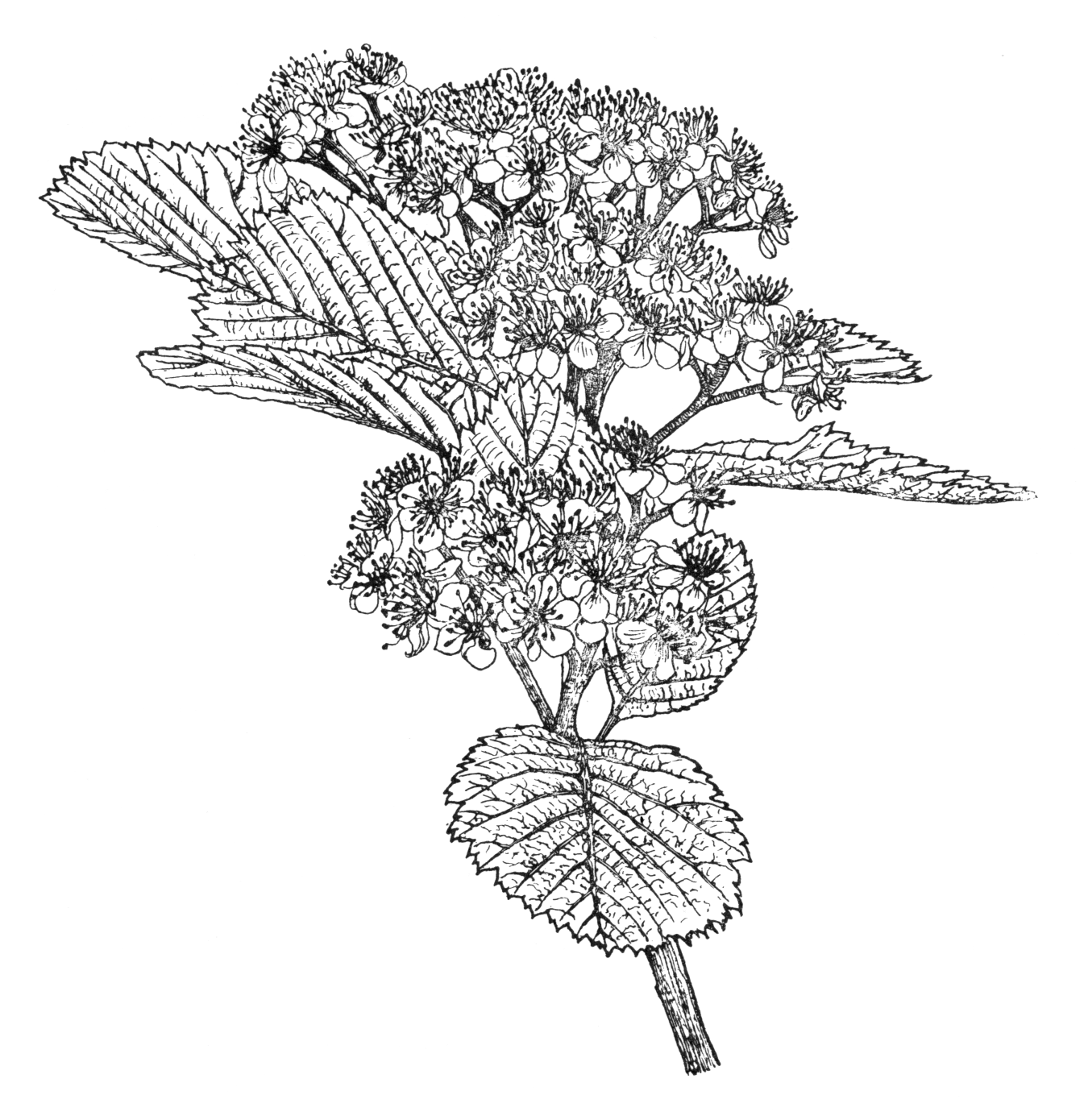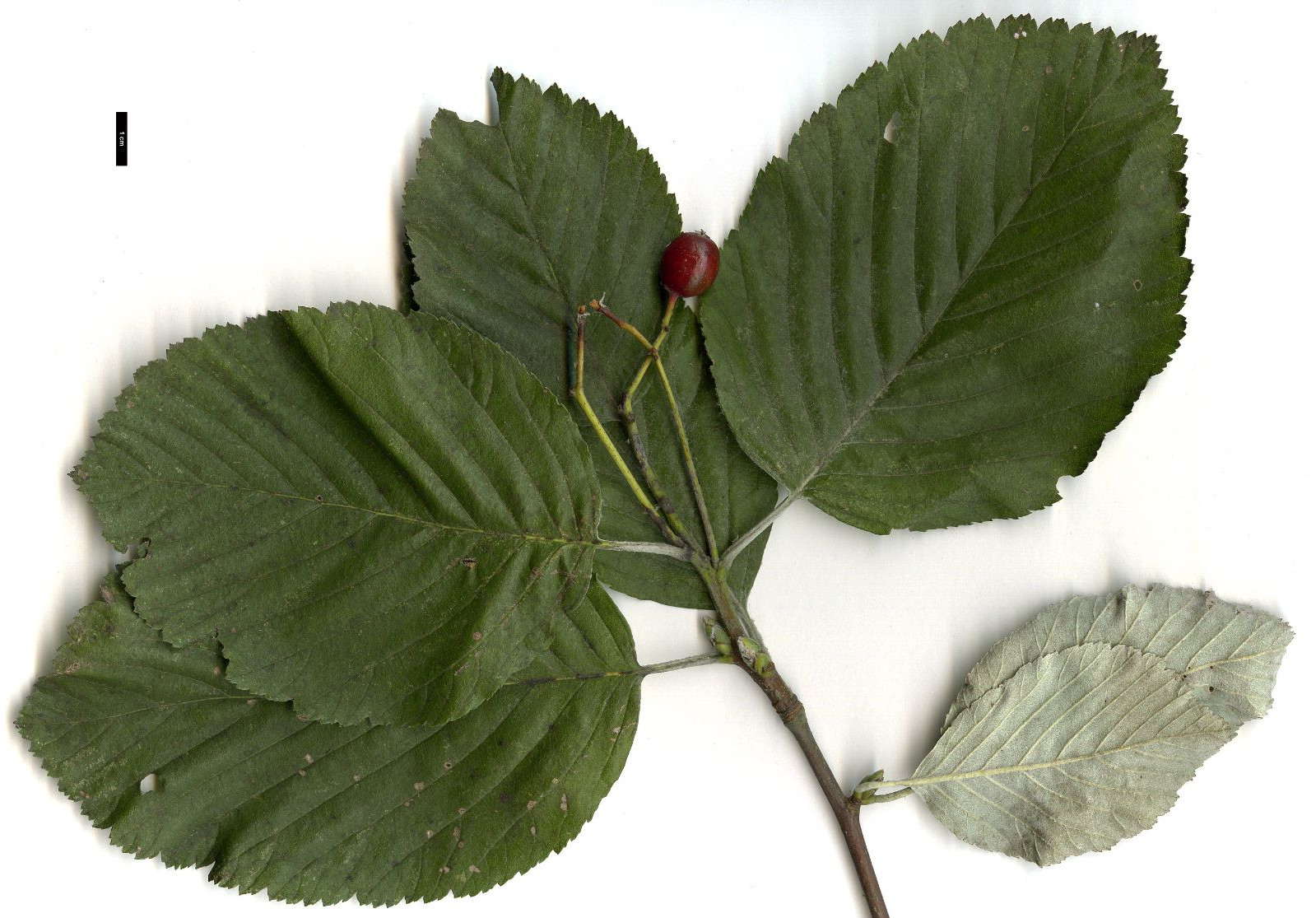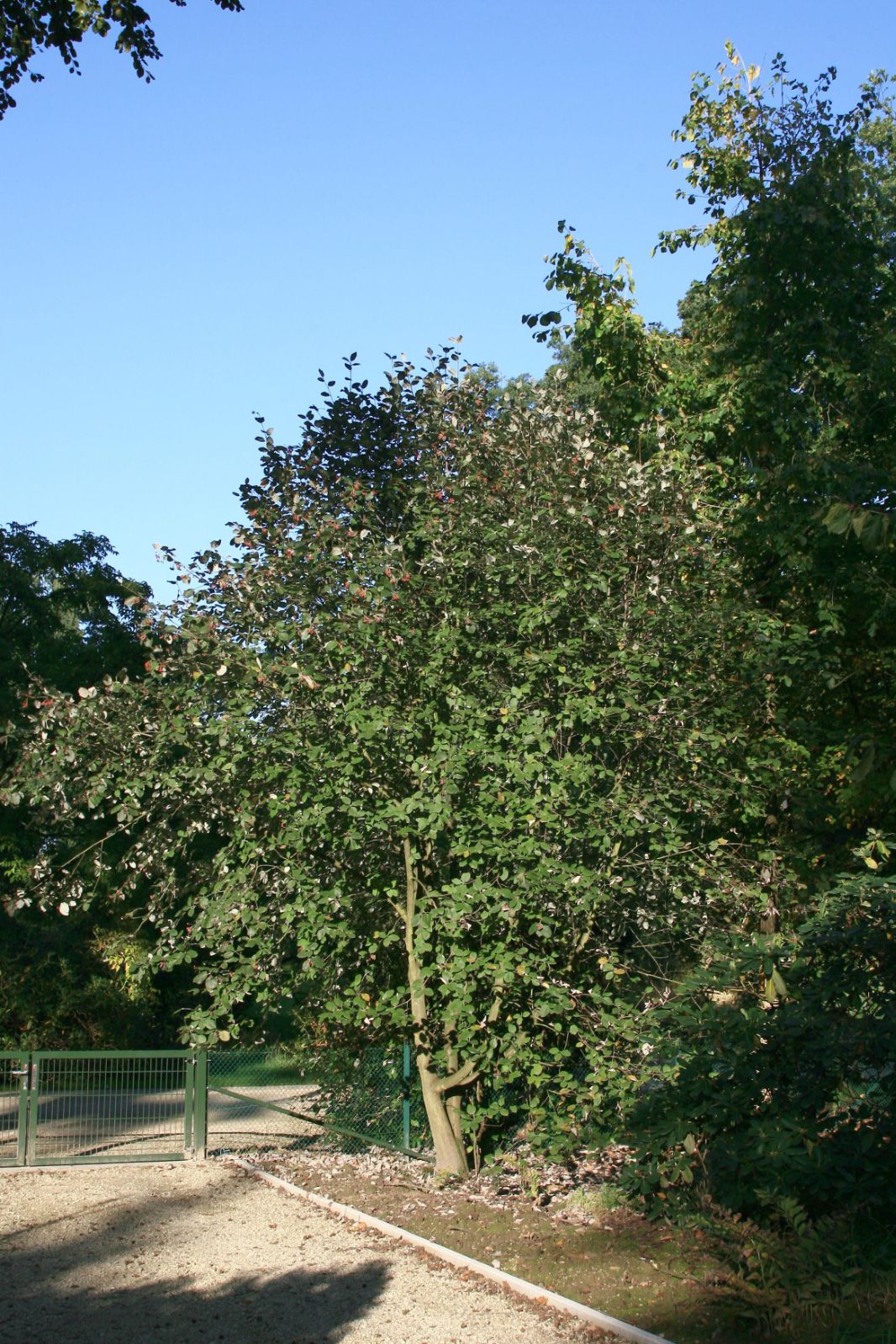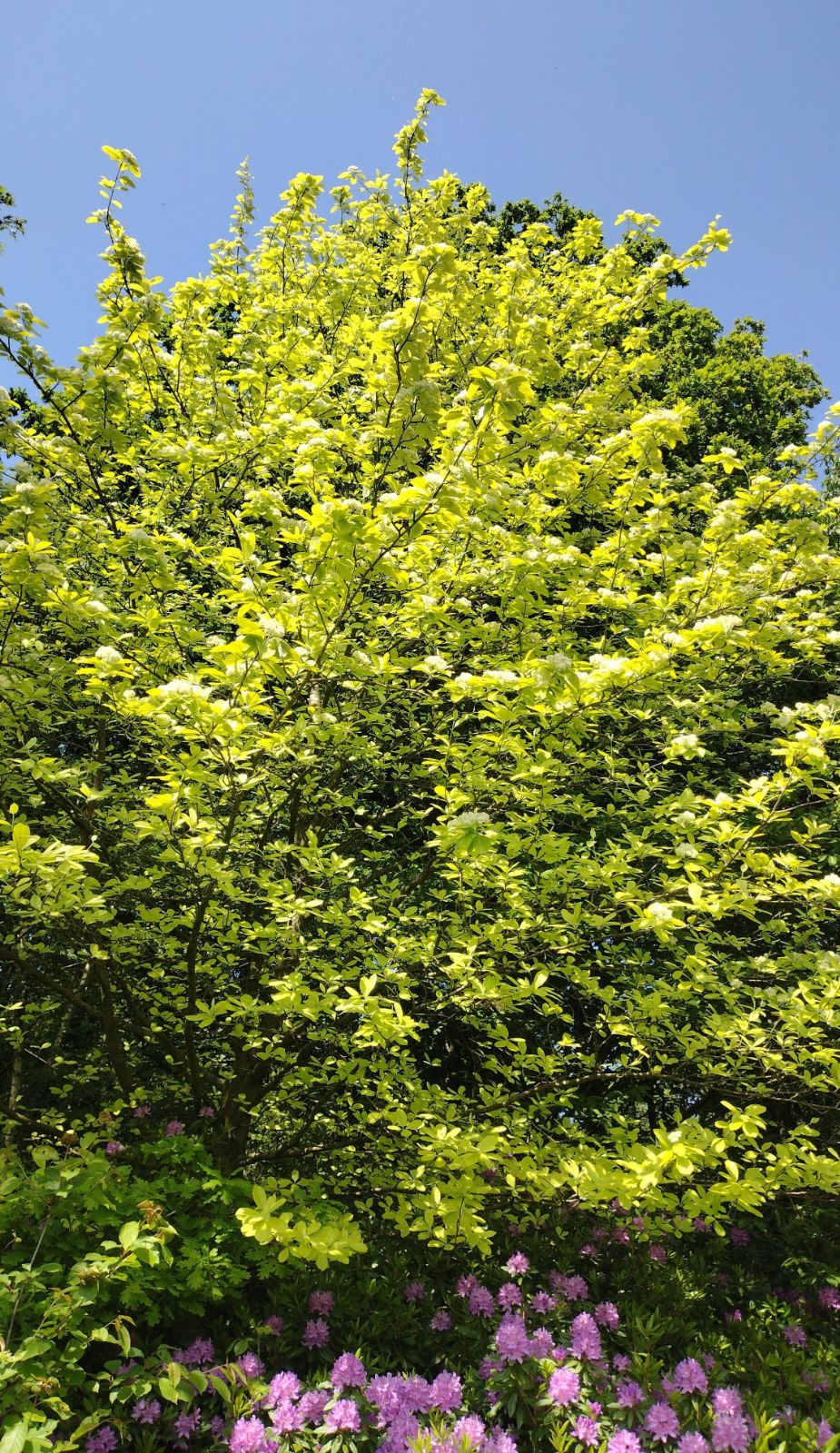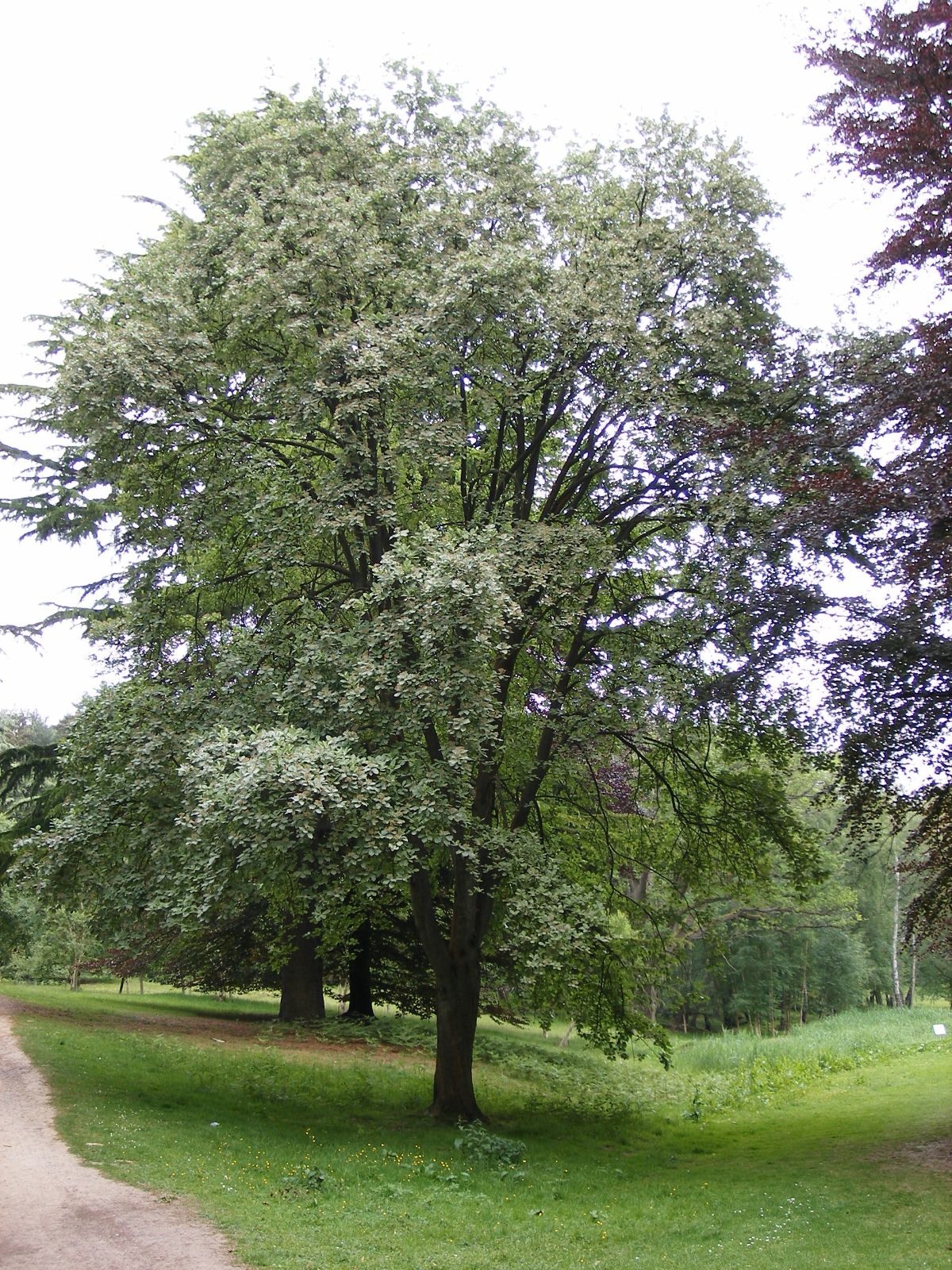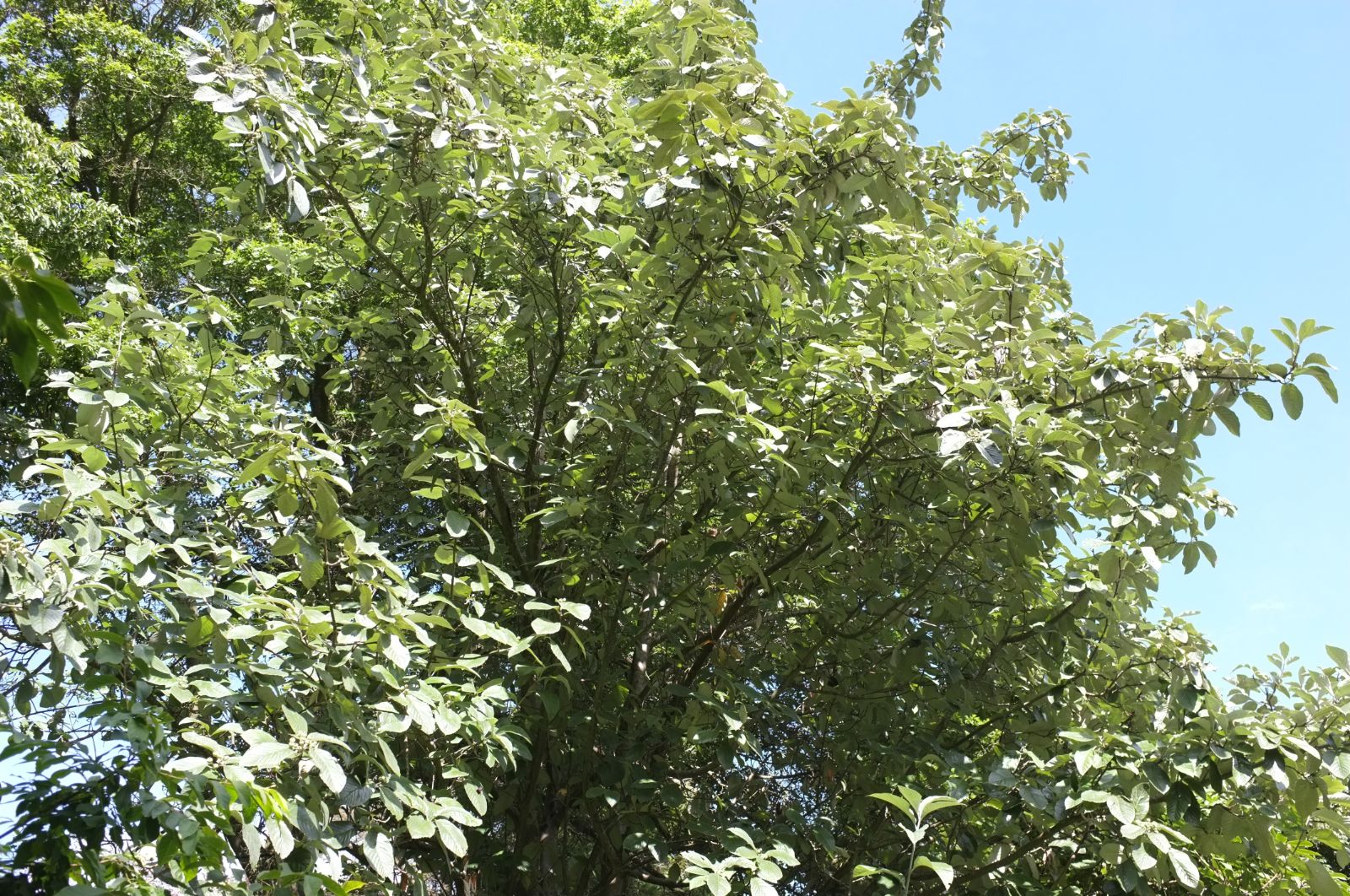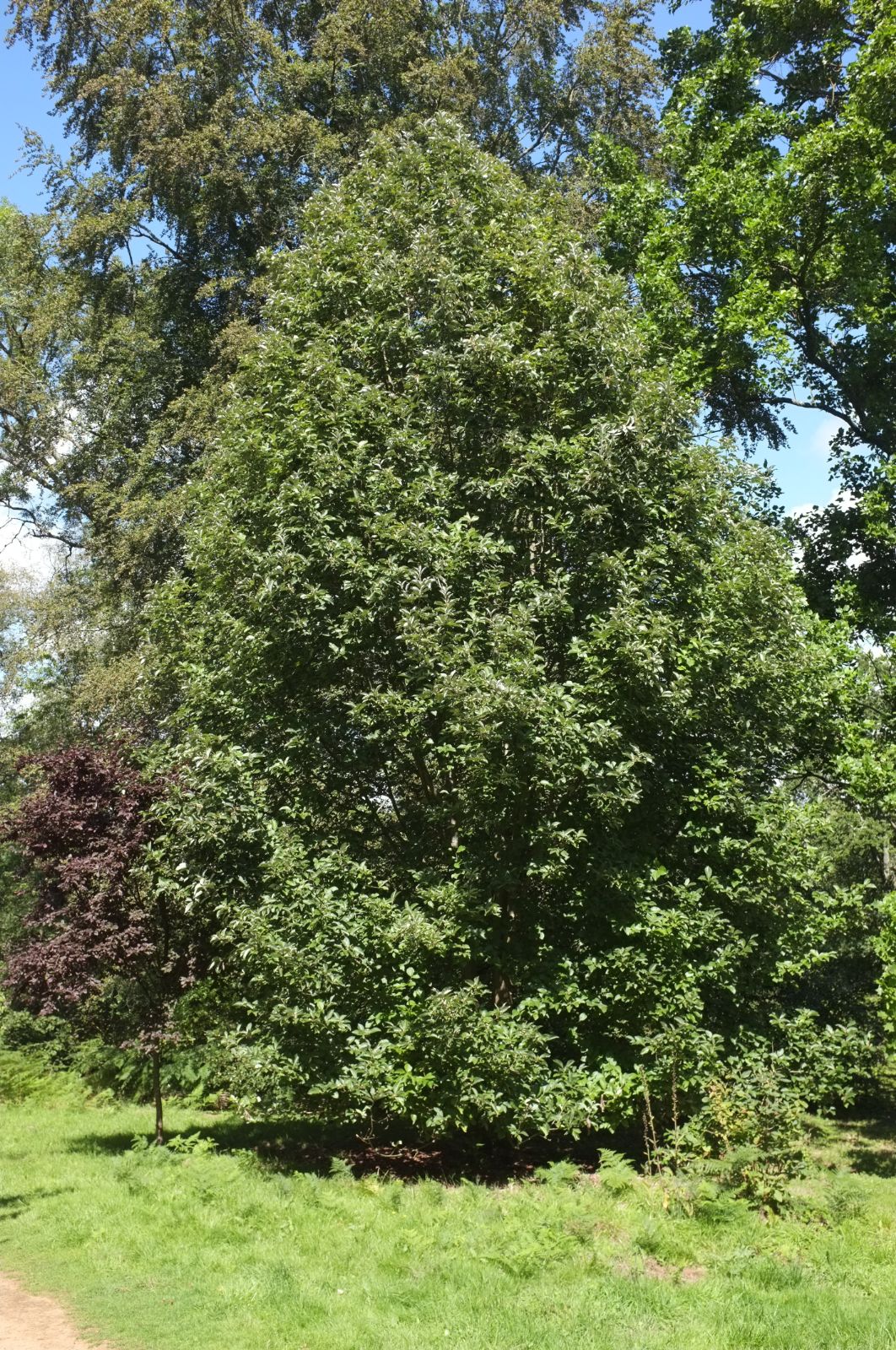Aria edulis
Credits
Article from Bean's Trees and Shrubs Hardy in the British Isles
Recommended citation
'Aria edulis' from the website Trees and Shrubs Online (treesandshrubsonline.
Genus
Common Names
- Whitebeam
Synonyms
- Aria alpina M.Roem.
- Aria majestica Lavallée nom. nud.
- Aria nivea Host
- Aria nivea var. edulis (Willd.) Koehne
- Aria tomentosa (Rouy & E.G.Camus) Bonnier
- Aria vulgaris Decne.
- Aronia alpina (M.Roem.) Dippel
- × Aroniaria alpina (M.Roem.) Mezhenskyj
- Azarolus aria (L.) Borkh.
- Chamaemespilus aria (L.) M.Roem.
- Crataegus alpina Gray
- Crataegus aria L.
- Crataegus pallida Salisb.
- Hahnia aria (L.) Medik.
- Lazarolus aria (L.) Borkh.
- Malus aria (L.) Risso
- Mespilus aria (L.) Scop.
- Pyrenia aria (L.) Clairv.
- Pyrus alpina Willd.
- Pyrus aria (L.) Ehrh.
- Pyrus carpatica Asch. & Graebn.
- Pyrus crenata K.Koch
- Pyrus edulis Willd.
- × Sorbaronia alpina (M.Roem.) C.K.Schneid.
- Sorbus acutiloba Gand.
- Sorbus alpina Heynh.
- Sorbus ararica Gand.
- Sorbus aria (L.) Crantz
- Sorbus aria var. edulis (Willd.) Wenz.
- Sorbus arioides (Godet) Michalet
- Sorbus arvernensis Gand.
- Sorbus austriaca subsp. serpentini Kárpáti
- Sorbus bellojocensis Gand.
- Sorbus budaiana Kárpáti
- Sorbus carpatica (Soó) Kárpáti
- Sorbus carpinifolia (J.R.Booth ex G.Kirchn.) Prain
- Sorbus chamaemespilus var. arioides Godet
- Sorbus controversa Gand.
- Sorbus edulis (Willd.) K.Koch
- Sorbus glabrata G.Kirchn.
- Sorbus globulifera Hedl. ex Ridd.
- Sorbus huljakii Kárpáti
- Sorbus incisa (Mutel) Prain
- Sorbus longifolia (Pers.) Prain
- Sorbus oblonga Gand.
- Sorbus pallidifolia Gand.
- Sorbus reverchonii Gand.
- Sorbus scandica subsp. arioides (Godet) Nyman
- Sorbus sphaerocarpa Gand.
- Sorbus tomentosa (Rouy & E.G.Camus) Issler
- Sorbus turbinata Gand.
Infraspecifics
Editorial Note
The text below is that of Bean (Bean 1981) who discussed this taxon under the name Sorbus aria. We have created this hybrid article – Bean’s text under the correct modern name, with appropriate synonymy – whilst we await sponsorship to enable a full revision of this genus to be written. We are re-organising the Sorbus sensu lato articles in this way to enable a new revision of Sorbus sensu stricto to commence in 2023, and to bring the nomenclature of this complex group of plants up to date in line with modern treatments.
TC, September 2023.
A tree usually 30 to 50 ft high in gardens, but occasionally met with 60 to 80 ft high; main branches more or less erect; young branchlets clothed with loose white hairs, becoming nearly glabrous and lustrous dark brown by winter and furnished with pale lenticels; winter-buds ovoid, the scales greenish, brown and hairy at the edge, glabrous or slightly woolly on the back. Leaves simple, with eight to thirteen pairs of parallel ribs, elliptic to broadly so or ovate, rarely obovate, 2 to 4 in. long, half to two-thirds as wide, obtuse or acute at the apex, narrowed or rounded at the base, margins double-toothed except in the basal part which is simple-toothed or entire, upper surface lustrous, glabrous except when quite young, coated beneath with a close white felt; petiole 1⁄2 to 1 in. long. Flowers dull white, about 1⁄2 in. across, produced towards the end of May in corymbs 2 to 3 in. across; stalks and receptacles covered with white, matted hairs. Fruits ovoid or roundish, 3⁄8 to 1⁄2 in. long, scarlet-red, specked with brownish lenticels.
Native of southern England as far west as Dorset, but naturalised outside this area; in Ireland only in Galway; on the continent it is fairly widely distributed but is absent from Scandinavia and overlaps in southeast and parts of central Europe with minor related species; it does not occur in Asia.
There is no tree more characteristic of the chalk hills of England, or more beautiful in fruit. It is very effective in the breeze when the wind, by lifting the leaves, reveals the pure white undersurface in kaleidoscopic glimpses. A tree well laden with the bright red fruits is also one of the most beautiful of autumn pictures, but one that owing to the depredations of birds is often of short duration. It is best propagated by seeds, but the young plants grow very slowly at first. The timber is hard and heavy but too scarce to count for much in the timber trade. The largest tree recorded by Elwes and Henry grew at Camp Wood, near Henley-on-Thames, and was 75 × 43⁄4 ft in 1905. One of the largest recorded recently grows, appropriately, at Colesbourne in Gloucestershire, where it was planted by Elwes in 1904. It measures 50 × 6 ft (1975). Others are: Trawscoed, Aberystwyth, 58 × 6 ft (1969); Marble Hill, Twickenham, 50 × 41⁄2 ft (1968).
The whitebeam has many varieties, some wild, others of garden origin. The most distinct are:
From the Supplement (Vol. V)
specimens: Deer Wood, Shottermill, Surrey, 65 × 61⁄2 ft (1981); Gatton Park, Surrey, 42 × 63⁄4 ft (1979); Wakehurst Place, Sussex, Valley, 62 × 51⁄4 ft (1984); Alexandra Park, Hastings, Sussex, Bohemia Wood, 72 × 51⁄4 ft (1983); Sandford Park, Cheltenham, Glos., pl. 1925, 46 × 5 ft (1978); Teriing Place, Essex, 62 × 61⁄4 ft (1977); Stoke Rochford, Lines., 62 × 7 ft (1978); Castle Ashby, Northants, 35 × 8 ft and 70 × 9 ft at 3 ft (1983); Munches, Kircud., 66 × 51⁄2 ft (1985); Dunecht, Aberd., 36 × 7 ft (1983).
cv. ‘Majestica’. – specimens: Primrose Hill, London, 50 × 63⁄4 ft and 42 × 61⁄2 ft (1981); Borde Hill, Sussex, below Car Park, 48 × 43⁄4 ft (1978); Westonbirt, Glos., Willesley Drive, 68 × 7 ft at 3 ft (1975) and in Waste, pl. 1932, 44 × 43⁄4 ft (1981); Stourhead, Wilts., near House, 55 × 6 ft (1980).
'Aurea'
See under ‘Chrysophylla’.'Chrysophylla'
Leaves yellow throughout the season, rather narrower than normal, elliptic tending to obovate, to about 4 in. long and 2 in. wide. Put into commerce by Messrs Hesse of Weener, Hanover, ‘Aurea’, from the same firm, does not retain its colour so well, and has still narrower leaves.
'Edulis'
Leaves relatively narrower than in the type. Fruits larger and juicier (Pyrus edulis Willd.; S. aria var. edulis (Willd.) Wenzig). Known since the early 19th century but perhaps no longer in cultivation. By some authorities it is included in f. longifolia because of the similarity in leaf-shape, but there are no grounds for supposing that narrowness of leaf is correlated with large fruits. A tree received by Dr Fox at the Winkworth Arboretum had narrowish leaves but normal fruits; it was of compact habit.f. cyclophylla (Beck) Javorka
Synonyms
Aria nivea f. cyclophylla Beck
f. incisa (Reichenb.) Javorka
Synonyms
S. aria var. incisa Reichenb.
S. incisa (Reichenb.) Hedl
f. longifolia (Pers.) Rehd.
Synonyms
S. aria var. longifolia Pers.
S. longifolia (Pers.) Hedl., in part
'Gigantea'
Possibly deriving from ‘Majestica’, differing in its more lobulate, larger leaves and longer fruits (about {3/4} in. long). Raised by Messrs Lombarts of Holland and introduced in 1953. There is a similar tree at Kew, received as ‘Majestica’ early this century.'Lutescens'
A tree of conical habit. Leaves elliptic to obovate, cuneate to rounded at the base, to 4 in. or slightly more long, densely coated with silvery hairs on both sides when young and then very striking. Fruits in rather small trusses. It was put into commerce by Messrs Simon-Louis with its present cultivar-name before 1885, and is doubtfully the same as the S. aria var. lutescens of Hartwig (1892). The inappropriateness of the epithet lutescens for the present tree was remarked on soon after it came into commerce, and it has been suggested that it refers to the sulphur tinge of the leaves on the late-summer shoots of vigorously growing trees. ‘Lutescens’ has been widely used as a street-tree.
'Magnifica'
A vigorous tree, of narrow habit when young, more spreading with age. Leaves up to 5 in. long and 3 in. wide, rounded at the apex, darkish green and glossy above, white-felted beneath, turning yellow in autumn and persisting on the tree until well after those of S. aria and other cultivars have fallen. Flowers about {5/8} in. wide in dense trusses about 4 in. wide. Fruits ovoid, about {1/2} in. long, bright red, lenticellate, not freely borne.This whitebeam was raised from seed by Messrs Hesse of Weener, Hanover, and described by Herr Hesse in 1916. Beyond that, nothing is known of its history and it may be that it is not pure S. aria. However, it is not so distinct from S. aria as might be supposed from some catalogues, where the fruits are described as brown. This error is the result of confusion between S. aria ‘Magnifica’ and the form of S. aria × S. torminalis distributed by Messrs Hillier as S. × magnifica, for which see p. 443.Herr Hesse’s choice of name was unfortunate, for the epithet magnifica had been used earlier for a whitebeam similar to ‘Majestica’.

